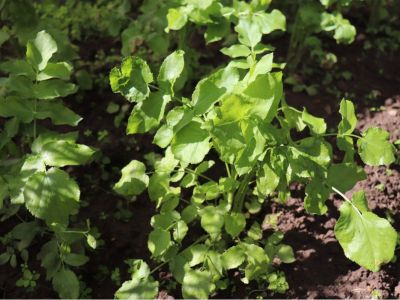What is a Skirret Plant?
According to the 1677 Systema Horticulurae, or the Art of Gardening, gardener John Worlidge referred to skirret as “the sweetest, whitest, and most pleasant of roots.” Native to China, skirret cultivation was introduced to Europe in classical times, brought to the British Isles by the Romans. Skirret cultivation was common in monastic gardens, gradually spreading in popularity and eventually making its way onto the tables of the medieval aristocracy. The word skirret hails from the Dutch “suikerwortel,” literally meaning “sugar root.” A member of the Umbelliferae family, skirret is grown for its sweet, edible roots just as its cousin, the carrot.
Additional Crummock Plant Info
Skirret plants (Sium sisarum) grow to between 3-4 feet (1 m.) in height with large, glossy, dark green, compound pinnate leaves. Plants blossom with small, white flowers. The grayish-white roots cluster from the base of the plant much like sweet potatoes do. The roots are 6-8 inches (15 to 20.5 cm.) in length, long, cylindrical, and jointed. Crummock, or skirret, is a low yield crop, and, hence, has never been viable as a commercial crop and has fallen out of favor until recently. Even so, this vegetable is difficult to find. Growing skirret plants is more of a delightful novelty in the United States, slightly more popular in Europe, and all the more reason for the home gardener to attempt skirret cultivation. So, how does one propagate skirret?
About Skirret Cultivation
Skirret cultivation is suitable in USDA zones 5-9. Usually, skirret is grown from seeds; however, it may also be propagated through root division. Skirret is a hardy, cool-season crop that can be directly sown after all danger of frost or started indoors for later transplant eight weeks before the last frost. A little patience is needed, as harvest will not take place for six to eight months. Work the soil deeply and remove all debris to facilitate root growth. Choose a site in a lightly shaded area. Skirret likes a soil pH of 6 to 6.5. In the garden, sow seeds in rows spaced 12-18 inches (30.5 to 45.5 cm.) apart with six inches (15 cm.) between rows at a depth of ½ inch (1.5 cm.) deep or set roots 2 inches (5 cm.) deep. Thin the seedlings to 12 inches (30.5 cm.) apart. Maintain moist soil and keep the area weed-free. Skirret is disease resistant for the most part and can be overwintered by mulching over in cold climates. Once the roots are harvested, they can be eaten directly, raw from the garden as a carrot or more commonly boiled, stewed, or roasted as with root vegetables. The roots may be quite fibrous, especially if the plants are older than one year, so remove the tough inner core prior to cooking. The sweetness of these roots is even more enhanced when roasted and is a delightful addition to the root vegetable lover’s repertoire.
